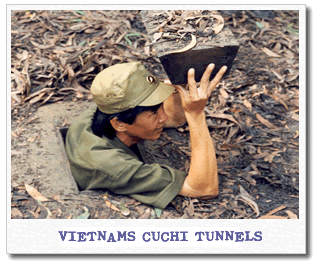Tora Bora Tunnel
Financed by the CIA and created by the mujahideen during the Soviet occupation of Afghanistan, the Tora Bora complex contains miles of tunnels, bunkers and fortified caves. Close to the White Mountain range near the eastern Afghan city of Jalalabad, the complex is where Osama bin Laden is believed to have hidden with 1,000 Taliban fighters. The caves and passages apparently have ventilation and power systems running on electric generators.
Gibraltar
The galleries
Inside the Rock of Gibraltar is a honeycomb of tunnels known as the galleries. The first passages were built during the great siege in 1779-1783, when Spanish troops attacked the Rock. Soldiers from the garrison dug through the stone to a promontory on the north face, which allowed them to fire on the Spanish below. In total, 304m of halls, passages and openings were created. More tunnels were added during the second world war when the British feared Gibraltar would be attacked. The tunnel system was expanded and the rock became a keystone in the defence of shipping routes to the Mediterranean.
Bosnia
Sarajevo tunnel
In 1993, citizens in Sarajevo began constructing a 1.5m high, 800m long underground passage. Their city was under siege from Serbian forces and the tunnel led to the UN-designated neutral area of Sarajevo airport. Bosnian volunteers worked in eight-hour shifts using picks and shovels to create a way for food, aid and weapons to come into the city, and people to escape. The tunnel was most famously used to transport the former Bosnian president Alija Izetbegovic in his wheelchair out of the city.
 Vietnam
Vietnam Cu Chi and Vinh Moc tunnels
During the Vietnam war American soldiers came up against the Viet Cong's Cu Chi tunnels. This huge system of underground passages stretched from the Cambodian border in the west to the outskirts of Saigon, running below the jungles of Vietnam. Used to mount surprise attacks against US troops, the tiny tunnels led to subterranean rooms, some of which were big enough to be used as hospitals, arms stores and even theatres. The first passages were built during the 1948 war of independence with France to link villages. Later, the Viet Cong painstakingly expanded them by hand until they covered 250km. To attack the tunnels, the US created a volunteer force made up of soldiers small enough to fit down the passages. After negotiating hidden traps of sharpened bamboo spikes, they had to fight their enemy in the tunnels. The complex has now become a war memorial park.
Under the former demilitarised zone that ran between the communist north and capitalist south, lie the Vinh Moc tunnels. They were built to shelter people from the intense bombing of the area and included wells, kitchens, rooms for each family and spaces for healthcare. Around 60 families lived in them - and as many as 17 children were born inside.
Jersey
War tunnels
Created during the German occupation of the island in the second world war, these tunnels were built by more than 5,000 slave labourers brought to Jersey. Many of the Russians, Poles, Frenchmen and Spaniards died of malnutrition or disease. Originally constructed as an ammunition store and artillery barracks, the tunnels were later converted to a casualty clearing station as D-Day drew nearer.
Poland
Stalag Luft III
Immortalised in the film the Great Escape, Tom, Dick and Harry were the tunnels created by the prisoners of the Stalag Luft III camp in Poland. Work on the tunnels began in 1942 and during the night of March 24, 1944, 76 inmates managed to escape down a 101m tunnel. All but three of the men were recaptured; the Gestapo shot 50 and returned the remainder to captivity.
France
Catacombs
Organised in a section of Paris's vast network of subterranean tunnels, the catacombs were a tourist attraction in the early 19th century. This cemetery covers a portion of Paris' former mines near the Left Bank's Place Denfert-Rochereau. During the second world war, both Parisian members of the French resistance and German soldiers used the tunnels.
full article in guardian.co.uk images from tripandom.com
No comments:
Post a Comment